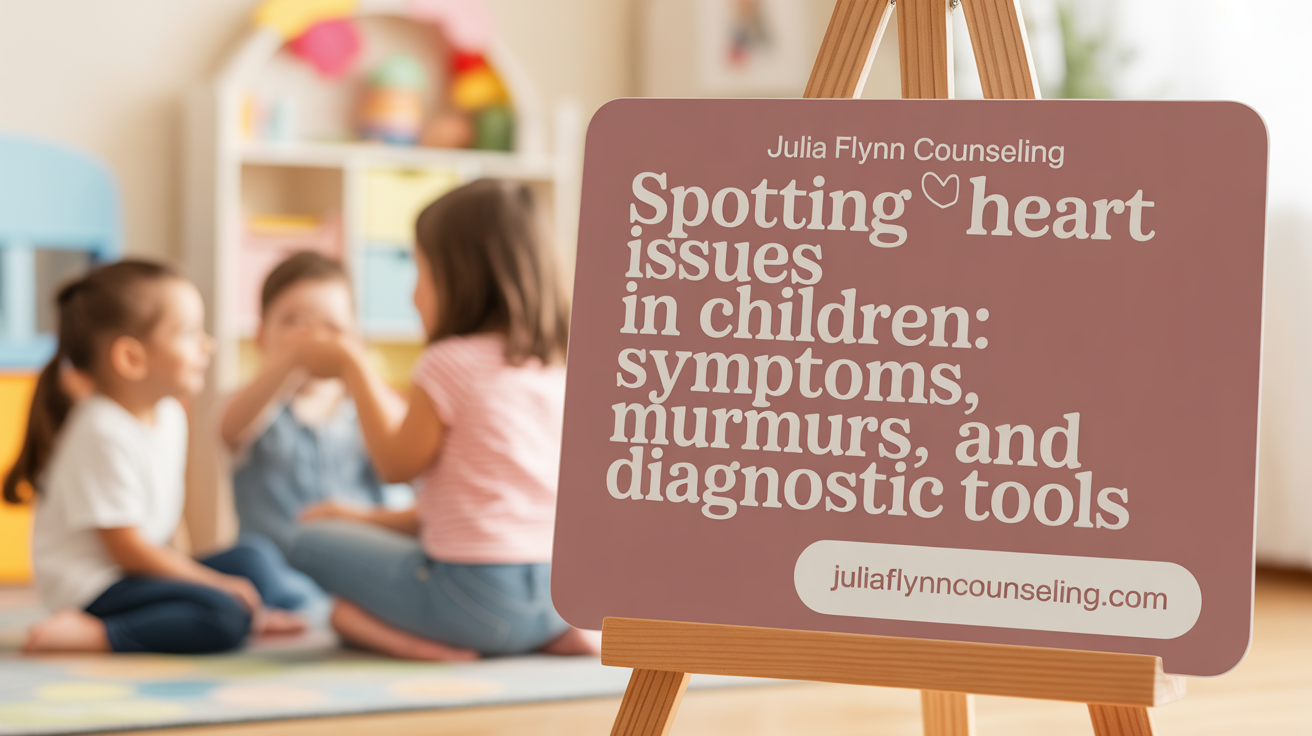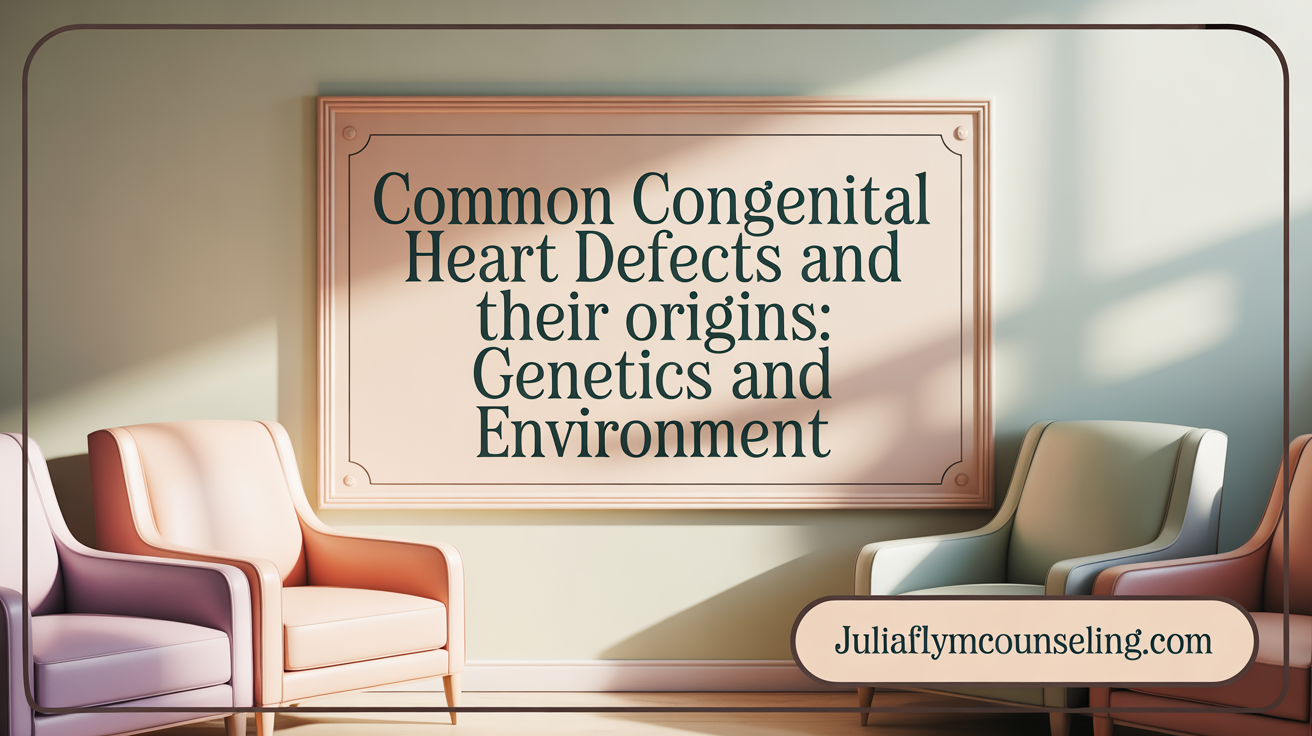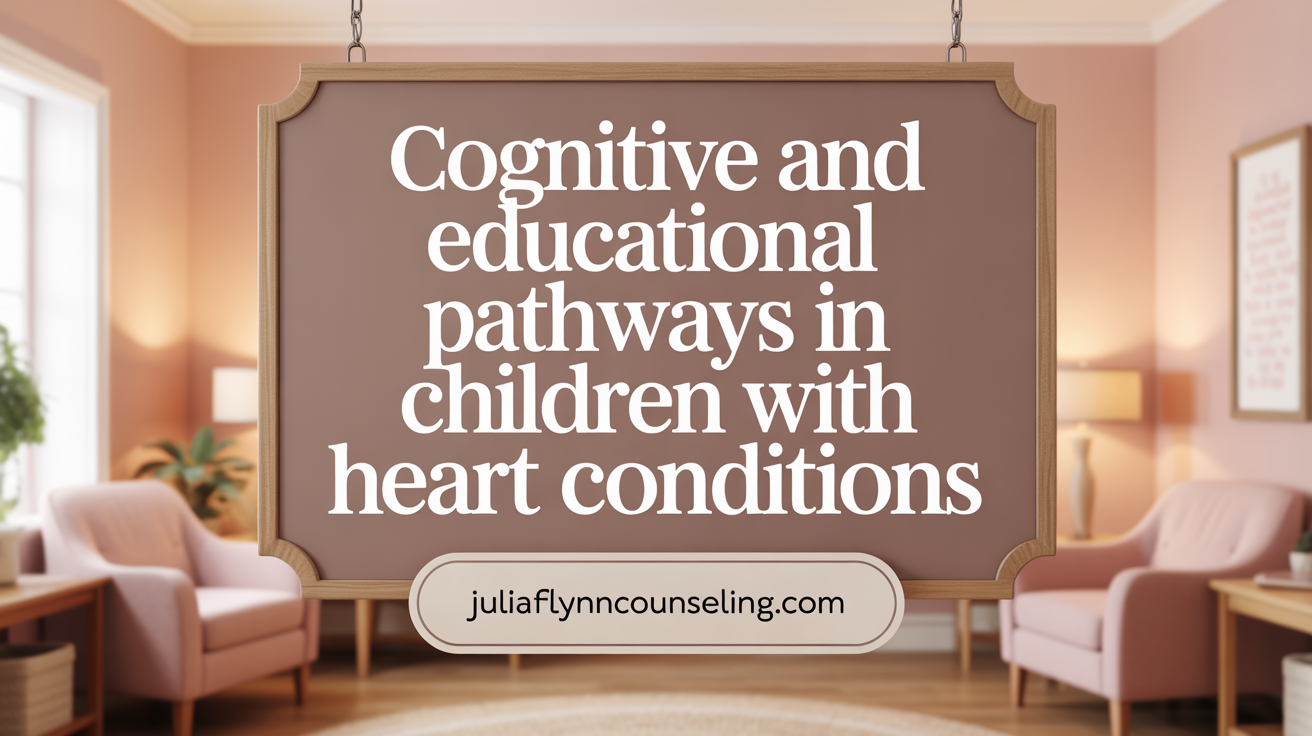Introduction to Congenital Heart Defects in Pediatric Populations
Congenital heart defects (CHDs) represent the most common birth defects worldwide, affecting approximately 1 in every 100 children. These structural abnormalities of the heart present at birth can vary significantly in severity — from mild defects that require minimal or no intervention to complex malformations necessitating multiple surgeries. Advances in medical science have greatly improved diagnostic accuracy and treatment outcomes, enabling many children to survive into adulthood and lead fulfilling lives. This article provides an in-depth overview of the types, causes, symptoms, diagnosis, management options, and emerging research surrounding congenital heart defects in children, as well as the neurodevelopmental and genetic factors that influence long-term outcomes.
Recognizing Symptoms and Diagnosing Congenital Heart Defects in Children

What are common symptoms that may indicate a child has a congenital heart defect?
Children with congenital heart defects (CHD) can present a variety of symptoms depending on the defect's type and severity. In infants, signs such as rapid breathing, bluish skin or lips (cyanosis), difficulty feeding, poor weight gain, excessive sweating, and extreme fatigue are common indicators of cardiac issues.
In older children, developmental delays may be evident along with symptoms like persistent weakness, shortness of breath during physical activities, fainting spells, and swelling in the legs, abdomen, or around the eyes. These symptoms often signal fluid retention associated with heart problems. During routine examinations, a doctor may detect abnormal heart sounds or a heart murmur, which could suggest an underlying structural defect.
Some defects are asymptomatic initially and are only discovered through screening or when complications arise. Recognizing these signs early is crucial for timely diagnosis and management.
How are congenital heart defects diagnosed in children?
Diagnosis involves a combination of physical assessments, symptom review, and specialized testing. Initially, a healthcare provider will listen to the heart with a stethoscope to detect abnormal sounds or murmurs. If suspicion arises, further diagnostic tools are employed.
Echocardiography, including fetal echocardiograms performed before birth, provides detailed images of the heart’s structure and helps identify defects such as septal holes or valve issues. An electrocardiogram (ECG) records electrical activity to detect rhythm irregularities or chamber enlargement.
Additional tests like chest X-rays can reveal an enlarged heart or fluid in the lungs, while pulse oximetry measures oxygen saturation to detect cyanosis. In complex cases or pre-surgical planning, cardiac MRI or catheterization may be necessary to provide more detailed information or to perform interventions.
Diagnosis can occur at various stages—prenatally during pregnancy, shortly after birth due to clear clinical signs, or later during childhood if symptoms develop or are discovered incidentally.
What are the typical heart murmurs associated with congenital heart defects?
Heart murmurs are abnormal sounds heard during heartbeat, caused by turbulent blood flow through defective valves or septal openings. In CHD, murmurs can be systolic, diastolic, or continuous, often graded on a scale from 1 to 6 based on loudness.
Common murmurs related to septal defects include those from atrial septal defect (ASD) and ventricular septal defect (VSD). These usually produce a systolic murmur that may be harsh or rough in quality. Valve abnormalities, such as aortic or pulmonary stenosis, typically cause systolic ejection murmurs with a crescendo-decrescendo pattern.
Additional features like a systolic click or radiation of sound can further indicate structural abnormalities. Murmurs that worsen with position changes, like standing or lying down, are particularly concerning.
While auscultation provides clues, echocardiography is essential to confirm the type, location, and severity of the defect. Proper identification guides treatment decisions and informs prognosis.
Types and Causes of Congenital Heart Defects in Children
 Congenital heart defects (CHD) encompass a broad range of structural abnormalities in the heart present from birth. These defects are typically classified into two main categories based on their effects on blood oxygenation: acyanotic and cyanotic types.
Congenital heart defects (CHD) encompass a broad range of structural abnormalities in the heart present from birth. These defects are typically classified into two main categories based on their effects on blood oxygenation: acyanotic and cyanotic types.
Classification of congenital heart defects into acyanotic and cyanotic types
Acyanotic heart defects involve conditions where blood oxygen levels remain normal because there is no mixing of deoxygenated and oxygenated blood in a way that causes visible bluish discoloration of the skin. These defects often result from abnormal blood flow between the heart chambers or blood vessels, increasing the workload on the heart.
In contrast, cyanotic defects involve mixing of deoxygenated blood with oxygenated blood, leading to a reduction in oxygen levels circulating through the body. This results in cyanosis, a bluish coloring of the skin and mucous membranes, especially noticeable in the lips, fingertips, and toes.
Common forms of acyanotic heart defects in children
Several acyanotic conditions are frequently diagnosed in children. Among the most common are:
- Ventricular Septal Defect (VSD): An opening in the septum separating the two ventricles, causing blood to shunt from the left to the right ventricle.
- Atrial Septal Defect (ASD): An opening in the septum dividing the atria that results in increased blood flow to the lungs.
- Patent Ductus Arteriosus (PDA): Persistence of the fetal ductus arteriosus, leading to abnormal blood flow between the aorta and pulmonary artery.
- Pulmonary and Aortic Stenosis: Narrowing of the pulmonary or aortic valves, affecting blood flow from the heart.
- Coarctation of the Aorta: A narrowing of a section of the aorta, increasing blood pressure before the constriction.
- Atrioventricular Septal Defect (AVSD): A combination of atrial and ventricular septal defects often associated with genetic syndromes like Down syndrome.
Causes and risk factors contributing to CHD, including genetic and environmental influences
The development of congenital heart defects is typically attributed to disruptions in normal heart formation during early pregnancy. These disruptions can be caused by genetic factors such as mutations, microdeletions, or gene dosage effects, notably in syndromes like Down syndrome, where about half of the affected individuals have CHD.
Environmental influences also play a significant role. Maternal health conditions, exposure to certain medications, alcohol, or toxins during pregnancy can elevate the risk. Additionally, nutritional factors such as folic acid deficiency have been linked to a higher incidence of congenital anomalies, including heart defects.
Genetic testing and prenatal imaging are valuable tools for diagnosing many CHDs before birth, enabling early intervention and tailored management plans.
| Aspect | Details | Additional Comments |
|---|---|---|
| Types of CHD | Acyanotic (e.g., VSD, ASD, PDA) & Cyanotic (e.g., Tetralogy of Fallot, transposition of great arteries) | Classification based on oxygen levels in blood |
| Common defects | VSD, ASD, PDA, pulmonary stenosis, coarctation, AVSD | Frequently diagnosed in infancy or early childhood |
| Causes & risk factors | Genetic mutations, chromosomal abnormalities, environmental exposures, maternal health | Important for prevention and early detection |
Understanding the variety and origins of congenital heart defects helps in early diagnosis and effective treatment, improving long-term health outcomes for affected children.
Genetic and Molecular Insights into Congenital Heart Defects
How do genetics and gene regulation influence the development of CHD?
Genetics play a significant role in the formation of congenital heart defects (CHDs). Many CHDs arise from mutations or variations in genes responsible for heart development. For instance, in children with Down syndrome, the extra chromosome 21 increases the dosage of specific genes that contribute to heart malformations like atrioventricular septal defects. Furthermore, gene regulators such as microRNAs and histone deacetylases are crucial in directing the growth and development of heart tissues.
Gene regulation mechanisms fine-tune fetal heart formation by turning genes on or off at the right developmental times. Disruptions in these processes can lead to structural abnormalities. For example, the gene regulator HDAC3 has been shown to influence heart wall thickness during fetal development. When HDAC3 is absent, the heart walls become abnormally thin, reflecting its importance in regulating heart tissue growth.
What are the molecular mechanisms involved in CHD development?
Molecular studies have uncovered complex networks controlling heart formation. MicroRNAs are small RNA molecules that regulate gene expression by suppressing or enhancing the production of specific proteins. These microRNAs are actively involved in shaping the heart's structure during fetal life.
Recent research highlights that regulators like HDAC3 cooperate with microRNAs and other molecules to regulate critical growth factors. In fetal mice, the absence of HDAC3 results in deregulated microRNA expression, leading to abnormalities in heart tissue growth. Such mechanisms underscore how precise gene regulation is vital for normal heart development.
How is recent research deepening our understanding of CHD?
Advanced techniques like single-cell RNA sequencing have revolutionized our understanding of CHD at the cellular level. Researchers assemble detailed maps of gene activity in individual heart cells, revealing variations between healthy and diseased hearts.
Studies utilizing stem cell models, such as induced pluripotent stem cells (iPSCs), allow scientists to examine cardiomyocytes derived from CHD patients. These cells display abnormal gene expression patterns, especially in cases like single ventricle disease or tetralogy of Fallot, indicating intrinsic cellular differences.
Furthermore, large-scale genomic analyses are identifying new gene networks and regulatory pathways involved in heart development. This research provides a roadmap for individualized therapies targeting specific cellular aberrations, ultimately aiming to improve outcomes for children with CHD.
| Aspect | Key Findings | Additional Details |
|---|---|---|
| Gene regulation | MicroRNAs and HDAC3 influence heart development | MicroRNA dysregulation can disrupt growth factor expression |
| Genetic contributions | Variations in chromosome 21 (Down syndrome) and monogenic mutations | Inherited and de novo mutations contribute variably |
| Cutting-edge research | Single-cell RNA sequencing and stem cell models | Offer insights into cellular and molecular differences in CHD |
Understanding these genetic and molecular frameworks enhances our capacity to diagnose, prevent, and treat congenital heart defects more effectively.
Neurodevelopmental and Educational Outcomes in Children with CHD

How does congenital heart disease (CHD) impact neurodevelopment, cognition, and motor skills?
Children with CHD are at an elevated risk for neurodevelopmental impairments that can affect various areas such as motor functioning, cognition, language, memory, executive functions, visual-spatial skills, attention, and social interaction. Brain development may be disrupted early during fetal growth due to altered blood flow and oxygen delivery. Infants with CHD often experience brain injuries like periventricular leukomalacia, which can contribute to developmental delays. Advanced neuroimaging studies reveal structural brain abnormalities and smaller brain sizes in children with CHD, correlating with poorer neurocognitive outcomes.
What are the specific challenges faced by children with syndromic conditions like Down syndrome?
Children with syndromic CHD, particularly those with Down syndrome (trisomy 21), are especially vulnerable. Approximately 50% of individuals with Down syndrome have congenital heart defects, most commonly atrioventricular septal defects. These children often face additional developmental challenges, including learning difficulties, behavioral disorders, and emotional disturbances. Research shows that children with Down syndrome and CHD tend to have more frequent psychiatric comorbidities, including learning and behavioral disorders, affecting their educational development. They are more frequently enrolled in special schools or integration programs and tend to attend later transfer to secondary education compared to peers without trisomy 21.
What are the educational trajectories and psychiatric challenges associated with CHD?
Children with CHD, especially those with syndromic conditions, show distinct educational pathways. Many attend special or integrated educational settings, with fewer reaching grammar or regular elementary schools. Studies indicate a high prevalence of psychiatric disorders among children with T21 and CHD, with over 82% affected by learning, emotional, or behavioral issues. Such challenges can hinder academic achievement, underscoring the importance of early interventions. Children with more severe CHD often need supportive measures such as individualized education plans and extra support services.
Why is routine neurodevelopmental follow-up and family-centered support essential?
Early assessment and targeted interventions are crucial for optimizing outcomes. Routine neurodevelopmental monitoring helps identify problems early when interventions can be most effective. Family-centered follow-up programs address both neurodevelopmental and emotional needs, providing comprehensive support to the child and family system. Providing families with reliable, understandable online resources further empowers parents to support their child's development and emotional wellbeing. Overall, integrating neurodevelopmental care into routine follow-up improves quality of life and educational achievement for children with CHD, especially those with complex syndromic conditions.
Advances in Treatment, Surgery, and Clinical Management of CHD in Children

Progress in diagnostic imaging and surgical techniques
Recent advancements in diagnostic imaging, such as high-resolution echocardiography, MRI, and CT scans, have significantly improved the ability to accurately diagnose and plan treatment for congenital heart defects (CHDs). Innovative modalities like 3D visualization, augmented reality (AR), virtual reality (VR), and 3D printing are now used to create detailed models of a child's heart. These technologies aid surgeons in preoperative planning, reducing invasive procedures and improving surgical outcomes.
Treatment options from medications to heart transplant
Management strategies for children with CHD range from minimally invasive catheter procedures to complex open-heart surgeries. Many defects, like atrial septal defects or ventricular septal defects, can be closed via catheterization, avoiding the need for open surgery. For more severe cases, surgical repairs or ongoing interventions such as heart transplants may be necessary. Treatments are tailored based on the defect's severity, the child's overall health, and associated conditions.
Postoperative care and long-term management including neurodevelopmental support
Children recovering from heart surgery require close monitoring to assess cardiac function and detect complications. Long-term management includes regular follow-up with pediatric cardiologists, management of potential arrhythmias, and addressing secondary issues like neurodevelopmental delays. Many children with CHD face challenges such as impaired motor skills, cognition, and social skills, highlighting the importance of early neurodevelopmental interventions and family-centered support programs.
Emerging technologies like 3D visualization for surgical planning
Innovative tools such as 3D printed heart models and augmented reality overlays enhance surgical precision. These technologies allow clinicians to visualize complex heart anatomy preoperatively, plan surgical strategies, and even simulate procedures. These advancements improve surgical accuracy, reduce operation time, and contribute to better overall outcomes for young patients.
| Technology | Application | Benefit |
|---|---|---|
| MRI and CT scans | Diagnostic imaging | Improved accuracy in identifying defects |
| 3D printing | Creating physical models of patient hearts | Enhanced surgical planning |
| AR and VR | Preoperative simulation and visualization | Increased surgical precision |
| Genetic and molecular tools | Understanding underlying causes | Personalized treatment approaches |
These innovations continue to shape the future of pediatric cardiac care, offering hope for better survival and quality of life for children with CHD.
Support Systems and Epidemiology of Congenital Heart Defects in Pediatric Patients

Prevalence and Survival Rates of CHD in Pediatric Populations
Congenital heart defects (CHD) are the most common birth defects, affecting about 1% of live births or roughly 8 in every 1,000 children. Each year, approximately 35,000 infants in the U.S. are born with these conditions. Thanks to major advances in diagnosis and treatment, survival rates have dramatically improved. Currently, over 97% of children with CHD are expected to reach adulthood.
Risk Factors and Epidemiological Trends
CHDs develop during early heart formation in pregnancy, largely influenced by genetic and environmental factors. For example, genetic conditions like Down syndrome are strongly associated with certain heart defects. Maternal health, exposure to harmful substances, and certain gene mutations also contribute. Epidemiological data highlight that the highest mortality risk occurs within the first four years of life, especially in more complex CHD cases.
Resources, Emotional Support, and Care for Families of Children with CHD
Families of children with CHD often face ongoing emotional and medical challenges. Accessible resources, such as online portals filled with reliable information, survivor stories, and community support groups, are valuable. These tools help parents understand their child's condition better and foster a sense of community. Support systems, including counseling and routine neurodevelopmental follow-ups, are essential for addressing both medical and emotional well-being.
Importance of Parental Education and Community Support Networks
Parental education significantly influences children’s educational pathways and overall development. Higher parental education levels are linked to better educational placements, such as attendance at grammar schools, and fewer children needing special schools. Community support networks offer practical advice and emotional reinforcement, empowering parents to navigate complex healthcare systems and advocate effectively for their child.
| Aspect | Details | Additional Notes |
|---|---|---|
| Prevalence | 1% of children affected | 8/1000 live births |
| Survival Rates | Over 97% survive into adulthood | Advances in care and diagnosis |
| Risk Factors | Genetic, environmental, maternal health | Down syndrome, gene mutations |
| Support Resources | Online portals, survivor stories, groups | Emotional and medical support |
| Family Impact | Parental education impacts outcomes | Higher education linked to better placement |
Conclusion and Future Directions in Congenital Heart Defect Care
Congenital heart defects remain a significant cause of childhood morbidity and mortality worldwide, but continued advances in diagnosis, treatment, and comprehensive care have transformed outcomes. Understanding the diverse types and underlying genetic and molecular causes of CHD enhances personalized treatment and prevention strategies. Moreover, recognizing the critical neurodevelopmental impacts and addressing the educational and psychosocial needs of affected children and families is essential for holistic care. Multidisciplinary approaches involving cutting-edge surgical techniques, innovative imaging, and robust family support systems are paving the way for improved quality of life and survival. Future research promises to further unravel the complex biology of CHD and foster novel therapies aimed at heart regeneration and improved neurodevelopmental health, ensuring brighter futures for children born with these challenging conditions.
References
- New Insights into the Education of Children with Congenital Heart ...
- Congenital heart defects in children - Symptoms and causes
- insights from parents of children with critical congenital heart ...
- New Study Provides Insight for How Congenital Heart Defects Manifest
- Congenital Heart Defects - American Heart Association
- Childhood Heart Disease & Congenital Heart Defects
- In preprints: insights into human heart development and congenital ...
- Living With a Child With Congenital Heart Disease - Conquering CHD
- Congenital Heart Defects in Children: A Comprehensive Insight
- Neurodevelopmental Abnormalities and Congenital Heart Disease
